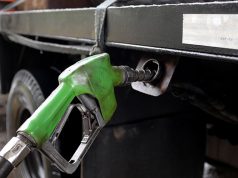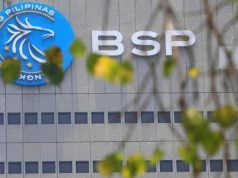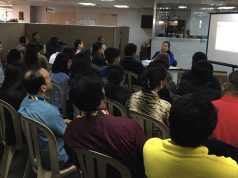
MANILA – Businesses turned less optimistic about prospects as 2018 opened amid worries about the impact of the tax reform law particularly on fuel prices, according to results of a recent central bank survey.
Business confidence slipped to 39.5% in 2018’s first three months from 43.3% logged in the fourth quarter of 2017, according to results of the latest Business Expectations Survey (BES) which the Bangko Sentral ng Pilipinas (BSP) conducted last Jan. 8-Feb. 22. The latest reading was also just slightly better than the 39.4% of 2017’s first quarter.
The confidence index is computed as percentage of respondents who answered in the affirmative less those who responded in the negative when asked on specific indicators.
BES data since at least 2013 show the slump follows a seasonal dip after the Christmas holidays that is followed by a second-quarter rebound.
The central bank said respondents — representing 1,469 companies nationwide — were less upbeat about the economy during the quarter as they expected the usual slowdown in business activity, as well as tempered consumer demand following the holidays and harvest season. They also expected stiffer competition and rising fuel prices to dampen sales in January-March.
Companies also grew cautious as they anticipated the impact of Republic Act No. 10963, or the Tax Reform for Acceleration and Inclusion (TRAIN) law that took effect Jan. 1.
“Concerns cited by respondent firms over the transitory impact on consumer prices with the implementation of the Tax Reform for Acceleration and Inclusion law may have contributed to the lower outlook, although a significant number of businesses surveyed also mentioned the positive impact of the tax reform,” Rosabel B. Guerrero, senior director at the BSP’s Department of Economic Statistics, said in a press briefing on Friday.
TRAIN introduced additional taxes on fuel, cars, coal, sugar-sweetened drinks and a host of other items, while cutting personal income tax rates.
Among others, the new law imposed an additional P2.50 excise tax per liter of diesel and P3/liter for kerosene at a time of three-year highs for world crude prices.
The central bank bared the results a day after the release of the latest Nikkei Philippines Manufacturing Purchasing Managers’ index, whose survey was conducted Feb. 12-21, baring a 50.8 reading that — while signalling “marginal” improvement in factories’ businesses from January — was the lowest in five months and the second-lowest since IHS Markit began the Philippine survey in January 2016. Respondents “mainly blamed new excise taxes, higher commodity prices… supply shortages and a weak peso for increased input costs,” IHS Markit said in its report last Thursday.
BSP Deputy Governor Diwa C. Guinigundo said in the same briefing that respondents were the ones who cited TRAIN as a key factor in first-quarter BES results.
BETTER ‘NEXT QUARTER’
Business sentiment improved for the next quarter, with that reading rising to 47.8% compared to the 39.7% recorded in 2017’s fourth quarter and the 47.2% of last year’s first three months.
“This suggests that economic growth could accelerate for the next quarter,” read the report, which noted that respondents cited as factors, among others, the:
• expected increase in household disposable income due to lower personal income tax withheld under TRAIN;
• seasonal increase in demand during the dry months that see more tourism activity, enrolment and harvest periods;
• an expected increase in state infrastructure spending especially with higher tax revenues due to TRAIN.
SECTORAL BREAKDOWN
Among major business sectors, wholesale and retail trade weighed on overall sentiment, with its optimism sinking to 31.0% in 2018’s first quarter from 50.1% in 2017’s fourth quarter and 36.6% in last year’s first three months.
Services — consisting of financial intervention, hotels and restaurants, business activities, real estate, transportation, as well as community and social services — were the most optimistic with a 50.6% reading that was sustained from 2017’s fourth quarter and better than the 40.6% logged a year ago.
Industry was next, with its reading improving to 39.0% from 33.2% in 2017’s fourth quarter but still below the 41.9% of last year’s first quarter.
Construction was the least optimistic, although its reading improved to 29.8% from 22.3% in 2017’s fourth quarter but eased from 35.7% a year ago.
Asked on their expectations for next quarter:
• services were also the most optimistic, with the reading improving to 50.8% from 42.3% in 2017’s fourth quarter and 50.4% a year ago;
• construction came next with 49.1%, down from 59.7% but up from 39.2% in the corresponding past comparative quarters;
• industry improved to 47.1% from 31.2% though still down from the year-ago 47.8%;
• while wholesale and retail trade improved to 45.3% last quarter from 41.0% in 2017’s fourth quarter and matched the reading of last year’s first three months.
About 19.9% of mining and quarrying respondents said they had expansion plans for the “next quarter”, compared to 25.5% in 2017’s fourth quarter and 21.6 a year ago, while:
• some 41.4% of those in agriculture, fishery and forestry said so, from 33.1% and 38.0% in the past comparative periods;
• electricity, gas and water rose to 36.8% from 33.3% and 30.9%; and
• respondents saying so in manufacturing increased to 35.2% in the first quarter from 31.0% in 2017’s fourth quarter but slipped from 35.5% a year ago.
Asked on business constraints for this quarter, 52.7% of respondents cited competition; 24.3% indicated insufficient demand; 13.5%, unclear economic laws; 12.9%, labor problems; 10.0%, high interest rate; 8.0%, financial problems; 6.8%, lack of materials input; 6.1%, lack of equipment; while 4.9% cited access to credit.
The financial conditions index remained in negative territory at -4.6% this quarter from -0.9% in the previous quarter. “This means that firms that expected tighter financial conditions increased and continued to outnumber those that said otherwise,” the report explained.
The employment outlook index for next quarter increased to 29.9% from 24.7% in the last quarter’s survey, the report noted further, explaining: “This indicates that the number of firms with hiring intentions increased relative to a quarter ago.”









